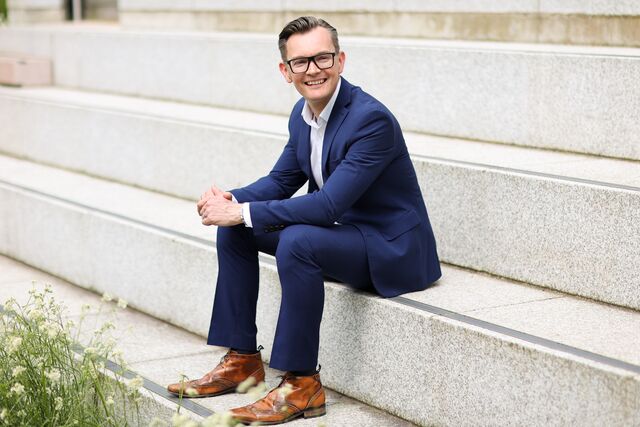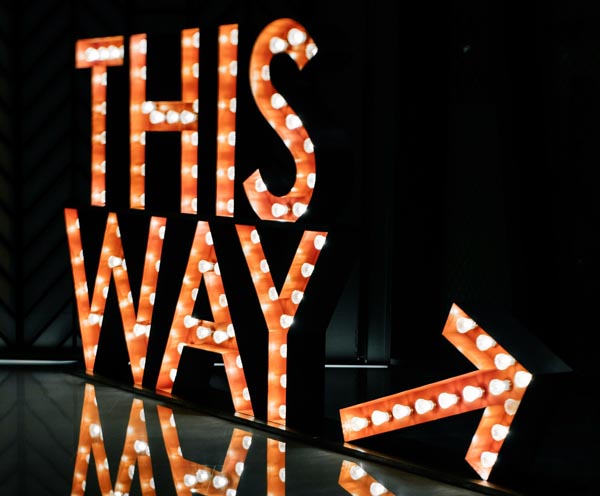The Third Way: Why Leaders Don't Have to Choose Between Burning Out and Checking Out
I found myself in a chemotherapy ward, watching an IV drip slowly into my veins. There had been no warning signs. Just weeks earlier, I was sprinting through life at full throttle: building a business, working with Formula 1 drivers and Fortune 500 executives, finishing a PhD in my spare time, trying to be present for my wife and two sons. I didn't call it burning the candle at both ends. I called it "peak performance."
The irony wasn't lost on me. Here I was, a human performance coach who'd spent years teaching others how to sustain excellence, and I couldn't see that my own carefully optimised life was unsustainable. The "effort + optimisation" algorithm that had governed everything had failed its most important test.
But as I sat in that hospital chair, something unexpected happened. For the first time in twenty years, I'd actually stopped. Not paused, not optimised a recovery window; I truly stopped. And in that forced stillness, a clarity emerged: I couldn't keep going at a million miles an hour, but checking out wasn't an option either. I needed what I came to call a “third way."
My experience was extreme, but the underlying challenge is universal. Despite companies spending nearly $70 billion annually on wellbeing initiatives, 90% of employees report that their work lives are worsening. While expenditure on self-improvement (think ice baths, saunas, supplements) reaches all-time highs, life satisfaction approaches historic lows. Half of all leaders report burnout symptoms, while the other half experience some level of disengagement. There's something about work that isn't working. But what's the alternative?
The Revelation
Thankfully, I made a full recovery from cancer. As I was getting back to 100% health, I had time to reflect on what went wrong and what might work better. As it turns out, the answer had been staring me in the face the entire time.
When I considered the top performers I'd worked with in both sport and business, I realised those who sustained excellence long-term shared one characteristic: they weren't following the "effort + optimisation" algorithm that had failed me. Rather, they were masters at integrating effort and recovery.
My revelation was simple but profound: we needed to approach knowledge work —the thinking work of leading —as a cognitive endurance activity. Athletes don't sprint for hours on end. They structure training in zones, balancing intensity with recovery. Why should cognitive work be any different? This insight evolved into what I call Regenerative Performance. At its heart lies a practical tool: the Cognitive Gears model.
Understanding Your Cognitive Gears
Just as heart rate training zones structure physical training from gentle walks to all-out sprints, cognitive gears help us understand the intensity of our mental work.
Low Gear is rest and low-level activity, the mind-wandering walks where breakthrough ideas emerge. Middle Gear involves task-switching: meetings, emails, messages, and administrative work. High Gear is deep focus on demanding work requiring sustained concentration.
The problem is that most leaders spend over 70% of their time stuck in Middle Gear, trapped in unnecessary meetings and endless email threads, with no time for deep focus and few opportunities for genuine rest. I imagine this is where you spend most of your day, too. The solution is to be more intentional about which gear you're in and when.
In my Global Leadership Summit keynote and in my new book, Regenerative Performance, I detail the complete framework, but three principles from each gear offer an immediate path forward:
Middle Gear efficiency comes from taming your inbox (process email in batches, not continuously), tackling meetings (five questions before setting any meeting can cut meetings by 20%), and trialling AI-employee alliances (early adopters save 30 minutes daily).
High Gear focus demands attention to when you work (align demanding tasks with your chronotype: your biological peak performance time), what you work on (only 2.5% of people can truly multitask; the rest of us lose 40% of our productivity trying), and how you work (your smartphone's mere presence reduces cognitive performance by 10%).
Low Gear recovery requires quality sleep (sleeping six hours for two weeks drops your effective IQ by 15 points) and strategic breaks (when you let your mind wander, you activate networks that produce creative breakthroughs).
The Ripple Effect: Beyond Individual Performance
The effect of implementing these ideas can enhance leaders’ personal wellbeing and performance, but it doesn’t stop there. One of the most striking research findings I've encountered recently indicates that a leader's personal wellbeing is the most influential driver of organisational wellbeing and the third most influential driver of organisational performance. When you prioritise building your own capacity rather than just spending it, you create ripple effects that reshape your team's approach to work.
This is the third way to sustainable excellence in an always-on world. You don't have to choose between burning out or checking out. There's another path, and it begins by shifting gears.

James Hewitt PhD
Human Performance Scientist
Dr. James Hewitt's new book, Regenerative Performance: How to Thrive in an Always-On World Without Sacrificing Your Wellbeing, explores these principles in depth with practical frameworks for leaders and teams. Learn more at www.drjameshewitt.com/book




